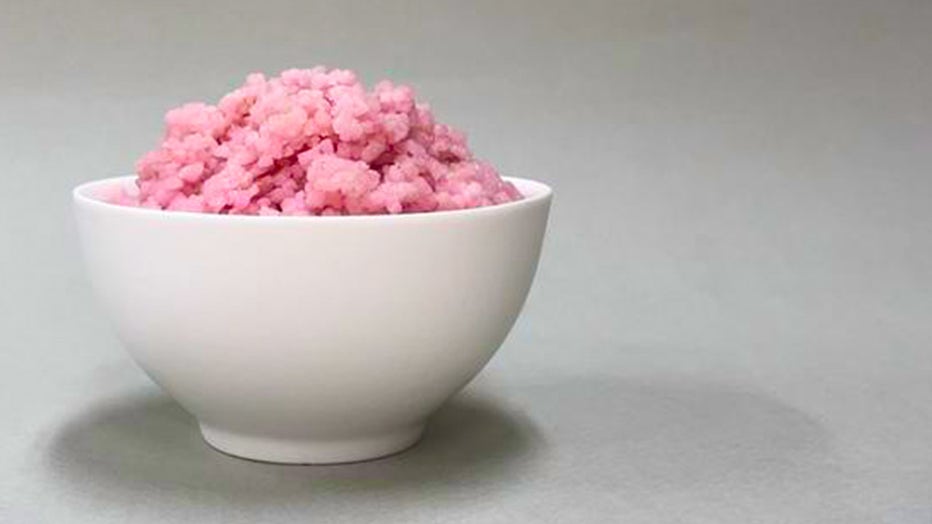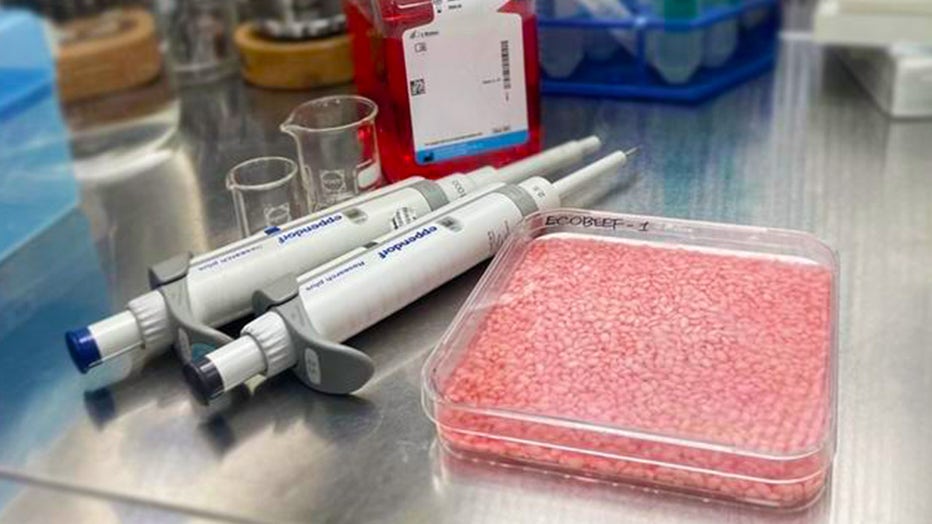Meaty rice developed by growing animal cells inside grains

Beyond Meat has designated May 3 as ?Beyond Day,? offering delicious deals at participating locations?
Beyond Meat is offering delicious deals at participating restaurants and supermarkets on May 3.
From lab-grown chicken to cricket-derived protein, scientists have continued to develop innovative meat alternatives to improve the environmental and ethical impacts of industrial agriculture.
Recently, Korean scientists have created cultured beef rice by growing animal muscle and fat cells inside rice grains.
In the study, published Wednesday in the journal Matter, researchers coated rice with fish gelatin, a safe and edible ingredient that helps cells latch onto the rice better. Cow muscle and fat stem cells were then seeded into the rice and left to culture in a petri dish for 9 to 11 days.
The team said the hybrid food could be a more affordable protein alternative with a smaller carbon footprint once it is commercialized.

Photo of hybrid beef rice. (Credit: Yonsei University)
Hybrid rice developed to reduce carbon footprint
"Imagine obtaining all the nutrients we need from cell-cultured protein rice," Sohyeon Park, a co-author of the study said in a statement. "Rice already has a high nutrient level, but adding cells from livestock can further boost it."
The findings revealed that the hybrid rice had 8% more protein and 7% more fat than regular rice. The product also had a significantly smaller carbon footprint at a fraction of the price. For every 100 grams of protein produced, hybrid rice was estimated to release less than 6.27 kilograms of CO2, while beef releases 49.89 kilograms.

Scientists cultured cow muscle and fat cells in rice grains to create a hybrid food. (Credit: Yonsei University)
But before the rice is commercialized for public consumption, the team said it plans to create better conditions in the rice grain for both muscle and fat cells to thrive, which can further boost the nutritional value.
"I didn’t expect the cells to grow so well in the rice," Park added. "Now I see a world of possibilities for this grain-based hybrid food. It could one day serve as food relief for famine, military ration, or even space food."
Lab-grown chicken approved for sale
Last year, and for the first time ever, U.S. regulators approved the sale of chicken meat made from lab-grown animal cells.
RELATED: Lab-grown chicken approved for sale in U.S.
The Agriculture Department said California firms Upside Foods and Good Meat can now bring "lab-grown" meat to restaurant tables and eventually, supermarket shelves.
"It essentially is real chicken made from animal cells," said Vitor Santo, senior director of cellular agriculture for Good Meat. "Instead of you having to raise a whole chicken and slaughtering and then cooking meat from it, what we do is we go back to the foundation of meat, which is really animal cells and instead of growing in them, in the animal, we grow that main bioreactor, which is essentially like a vessel, like a vat, similar to what we do fermentation, and we grow those cells with nutrients with these enriched media, and we produce chicken like that."
This story was reported from Los Angeles.

